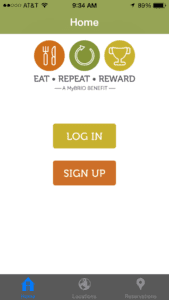1 min read
3 Considerations When Naming a Rewards Program
Bravo Brio Restaurant Group (BBRG) has at last found the right rewards rhythm after launching, testing, and then relaunching its rewards program....
Platform
What is Paytronix Guest Engagement Suite?
Combining online ordering, loyalty, omnichannel messaging, AI insights, and payments in one suite. Paytronix delivers relevant, personal experiences, at scale, that help improve your entire digital marketing funnel by creating amazing frictionless experiences.
A Complete Guest Engagement Suite
Online Ordering
Acquire new customers and capture valuable data with industry leading customization features.
Loyalty
Encourage more visits and higher spend with personalized promotions based on individual activity and preferences.
Catering
Grow your revenue, streamline operations, and expand your audience with a suite of catering tools.
CRM
Build great customer relationships with relevant personal omnichannel campaigns delivered at scale.
Artificial Intelligence
Leverage the most data from the most customer transactions to power 1:1 marketing campaigns and drive revenue.
Payments
Drive brand engagement by providing fast, frictionless guest payments.
Solutions
Paytronix Guest Engagement Solutions
We use data, customer experience expertise, and technology to solve everyday restaurant and convenience store challenges.
FlightPaths are structured Paytronix software onboarding journeys designed to simplify implementation and deliver maximum ROI.
Customer Success Plans (CSPs) are tiered service offerings designed to help you get the most from your Paytronix software, whether you prefer self-guided support or hands-on partnership.
Contactless Experiences
Accommodate your guests' changing preferences by providing safe, efficient service whether dining-in or taking out.
Customer Insights
Collect guest data and analyze behaviors to develop powerful targeted campaigns that produce amazing results.
Marketing Automation
Create and test campaigns across channels and segments to drive loyalty, incremental visits, and additional revenue.
Mobile Experiences
Provide convenient access to your brand, menus and loyalty program to drive retention with a branded or custom app.
Subscriptions
Create a frictionless, fun way to reward your most loyal customers for frequent visits and purchases while normalizing revenues.
Employee Dining
Attract and retain your employees with dollar value or percentage-based incentives and tiered benefits.
Order Experience Builder
Create powerful interactive, and appealing online menus that attract and acquire new customers simply and easily.
Loyalty Programs
High-impact customizable programs that increase spend, visit, and engagement with your brand.
Online Ordering
Maximize first-party digital sales with an exceptional guest experience.
Integrations
Launch your programs with more than 450 existing integrations.
Loyalty Programs
Deliver the same care you do in person with all your digital engagements.
Online Ordering
Drive more first-party orders and make it easy for your crew.
Loyalty Programs
Digital transformations start here - get to know your guests.
Online Ordering
Add a whole new sales channel to grow your business - digital ordering is in your future.
Integrations
We work with your environment - check it out
Tobacco Reporting
Comply with AGDC 2026 DTP Requirements
Company
We are here to help clients build their businesses by delivering amazing experiences for their guests.
Meet The Team
Our exceptional customer engagement innovations are delivered by a team of extraordinary people.
News/Press
A collection of press and media about our innovations, customers, and people.
Events
A schedule of upcoming tradeshows, conferences, and events that we will participate in.
Careers
Support
Paytronix Login
Order & Delivery Login
Resources
Paytronix Resources
Learn how to create great customer experiences with our free eBooks, webinars, articles, case studies, and customer interviews.
FlexPoint Service Catalog
Access FlexPoints are a cost-effective, flexible way to access our value-added services, to ensure you get greater impact from your Access software solution.
See Our Product In Action
E-Books
Learn more about topics important to the restaurant and c-store customer experience.
Reports
See how your brand stacks up against industry benchmarks, analysis, and research.
Blog
Catch up with our team of in-house experts for quick articles to help your business.
Case Studies
Learn how brands have used the Paytronix platform to increase revenue and engage with guests.
Unlock loyalty strategies that 3 out of 4 restaurants use to boost engagement by 40% without adding staff.
2 min read
Mar 02, 2016

At over 75 million strong, millennials dominate the U.S. population. This generation born between 1980 and 1996 holds around $1.3 trillion in spending power, according to Boston Consulting Group, and they haven’t even reached maximum earning power yet. Your brand needs to connect with millennials now – it’s crucial to the future of your business.
Building relationships now with millennials has immediate benefits, but it pays off even more in the long-term. Capture their attention early, and they could remain loyal to your brand for the rest of their lives, even passing on their love of your brand to their children. But, getting their attention now is tricky.
The age gap in the millennial generation is the root of many marketing communication issues. The 20-year olds could be at college with irregular daily schedules, limited budgets, and a single relationship status. On the other end of the spectrum, 36 year-olds could be married with a home, plenty of savings, and even children. And yet, from 20 to 36, this generation has enough common characteristics to be lumped together as ‘millennials’. What’s a marketer to do? It seems as though rewards programs couldn’t possibly account for the needs of every millennial.
Well, let’s not jump to conclusions. Think about some common characteristics within the demographic – millennials have short attention spans, expect brands to cater to their personal needs, and lead very busy lives. We could go into endless detail about these qualities, but basically it boils down to this: millennials demand that rewards programs are 1. Simple, 2. Relevant, and 3. Convenient. Let’s tackle #1.
Getting more millennials to enroll in your program means building a program that has a simple structure and therefore clear value proposition (don’t forget that naming your rewards program can be just as important as building it!). The first question a millennial (or anyone, for that matter) will ask when learning about your program is ‘What’s in it for me?’ It should take little to no time for a customer to calculate the benefit that the program offers to them. If the program contains a complicated points system or an unclear benefit, enrollment numbers will be affected. Low enrollment rates in turn create an unhealthy rewards program, according to the Loyalty Impact Model. Take a look:

Beyond that, we need to consider the preferences of your target audience. ‘Simple’ does not mean the same thing to everyone. What does it mean to your customers? To answer that question, you need data – and lots of it. You’d want to know how old they are, their average spend per visit, the time of day they usually visit, what menu items they usually order, whether or not they have children, how often they eat out in general, and more. If you’re building a new rewards program, this data should be the foundation of the program’s infrastructure. Or, if you already have a rewards program, use customer data to create promotions that are as relevant and effective as possible.

1 min read
Bravo Brio Restaurant Group (BBRG) has at last found the right rewards rhythm after launching, testing, and then relaunching its rewards program....

2 min read
Your brand needs to connect with millennials now – it’s crucial for the future of your business. At over 75 million strong, millennials dominate...

3 min read
Every restaurant understands that attracting new customers is crucial for sustained success. But even though the millennial generation begins with...